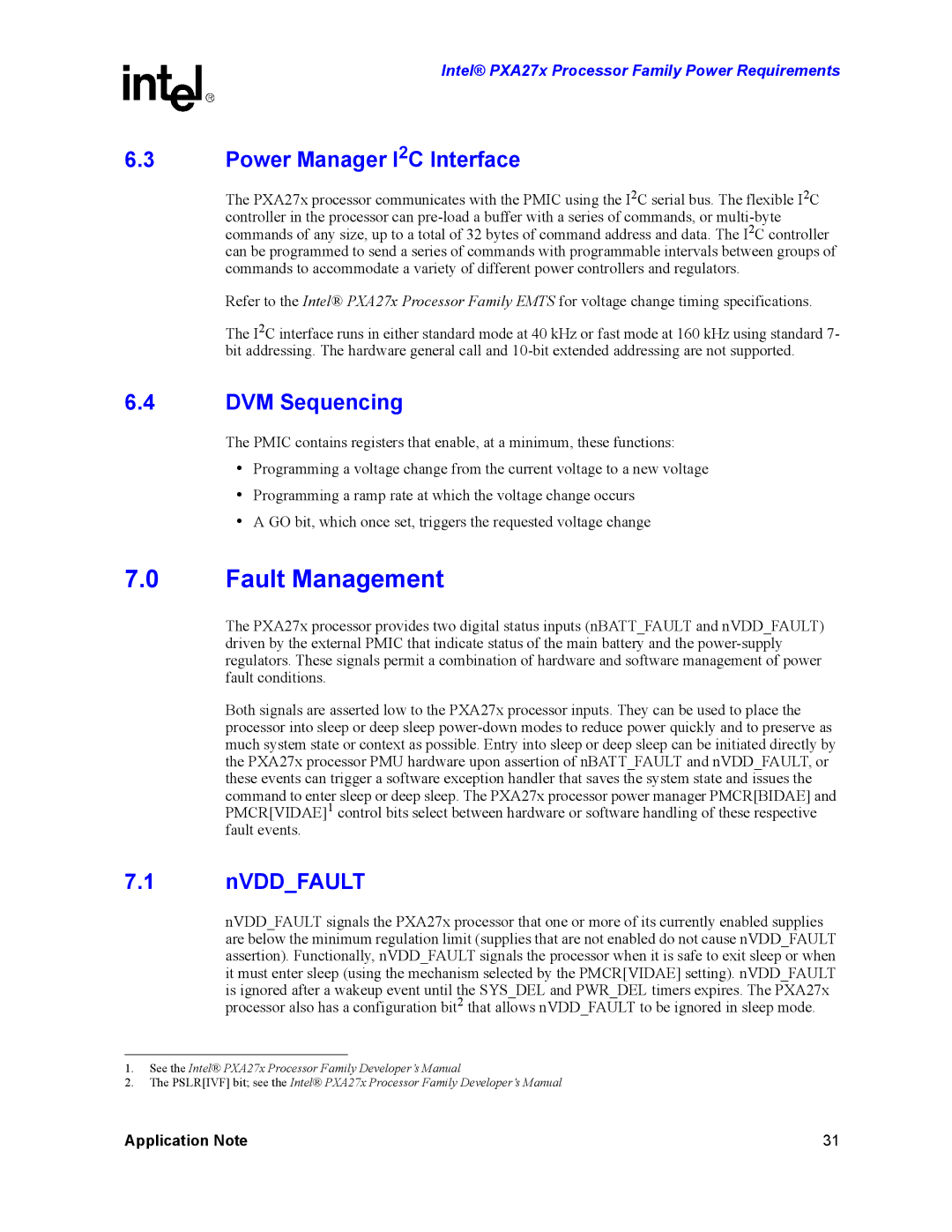
Intel® PXA27x Processor Family Power Requirements
6.3Power Manager I2C Interface
The PXA27x processor communicates with the PMIC using the I2C serial bus. The flexible I2C controller in the processor can
Refer to the Intel® PXA27x Processor Family EMTS for voltage change timing specifications.
The I2C interface runs in either standard mode at 40 kHz or fast mode at 160 kHz using standard 7- bit addressing. The hardware general call and
6.4DVM Sequencing
The PMIC contains registers that enable, at a minimum, these functions:
•Programming a voltage change from the current voltage to a new voltage
•Programming a ramp rate at which the voltage change occurs
•A GO bit, which once set, triggers the requested voltage change
7.0Fault Management
The PXA27x processor provides two digital status inputs (nBATT_FAULT and nVDD_FAULT) driven by the external PMIC that indicate status of the main battery and the
Both signals are asserted low to the PXA27x processor inputs. They can be used to place the processor into sleep or deep sleep
7.1nVDD_FAULT
nVDD_FAULT signals the PXA27x processor that one or more of its currently enabled supplies are below the minimum regulation limit (supplies that are not enabled do not cause nVDD_FAULT assertion). Functionally, nVDD_FAULT signals the processor when it is safe to exit sleep or when it must enter sleep (using the mechanism selected by the PMCR[VIDAE] setting). nVDD_FAULT is ignored after a wakeup event until the SYS_DEL and PWR_DEL timers expires. The PXA27x processor also has a configuration bit2 that allows nVDD_FAULT to be ignored in sleep mode.
1.See the Intel® PXA27x Processor Family Developer’s Manual
2.The PSLR[IVF] bit; see the Intel® PXA27x Processor Family Developer’s Manual
Application Note | 31 |
